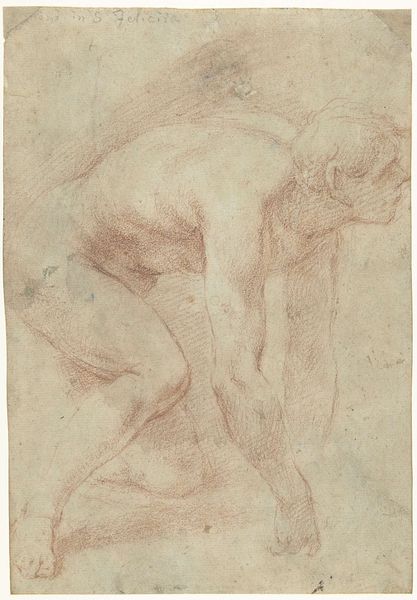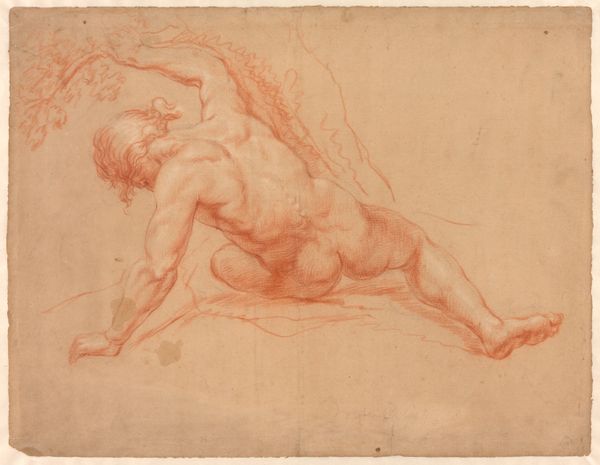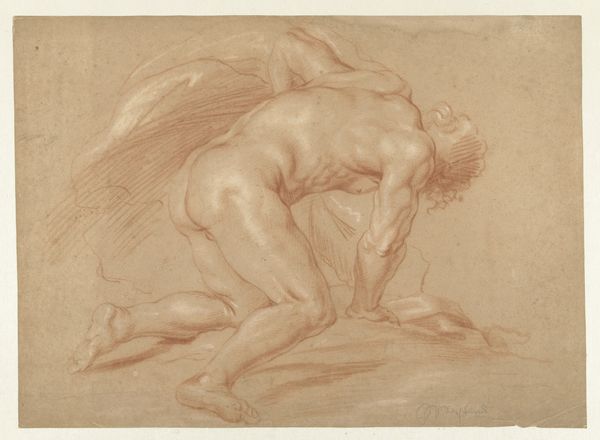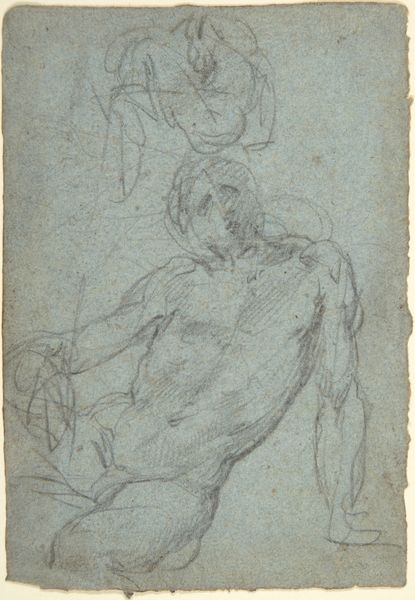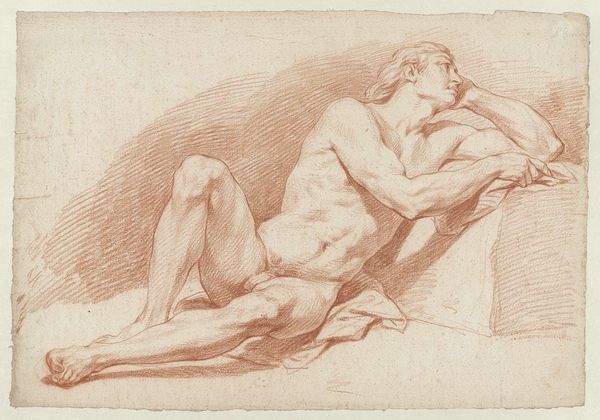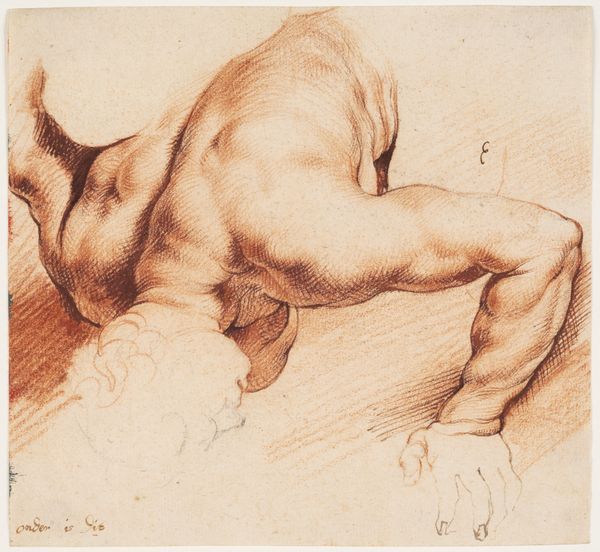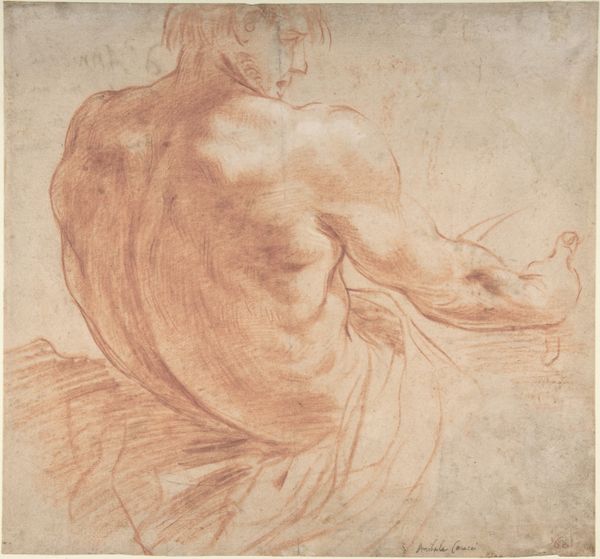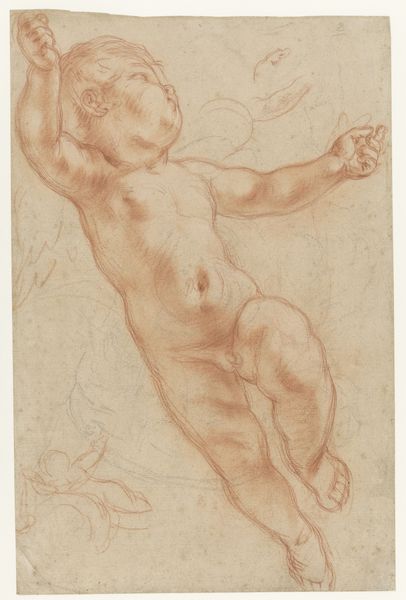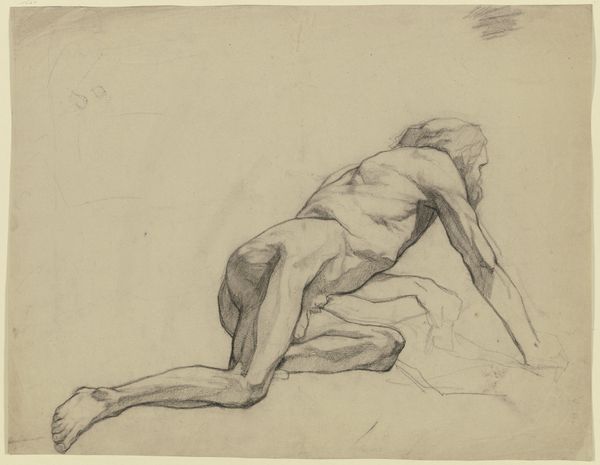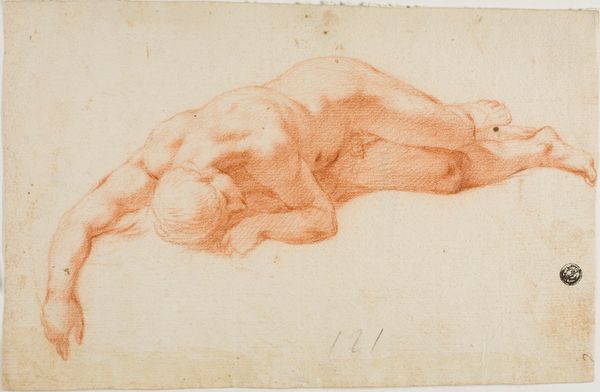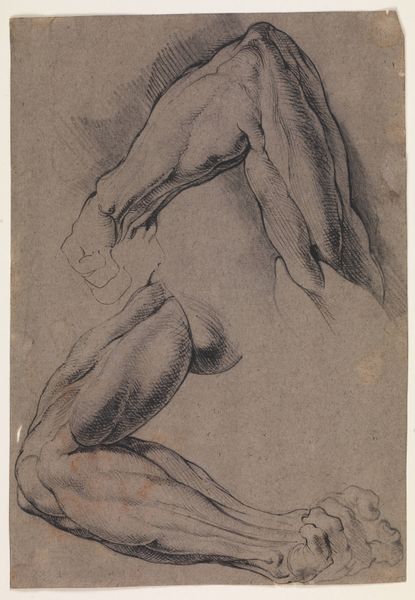
drawing, pencil, charcoal
#
portrait
#
drawing
#
charcoal drawing
#
figuration
#
pencil drawing
#
pencil
#
charcoal
#
academic-art
#
nude
Dimensions: 10 3/4 x 16 5/8 in. (27.31 x 42.23 cm)23 3/4 x 29 3/4 in. (60.33 x 75.57 cm) (outer frame)
Copyright: Public Domain
Editor: This drawing, "The Dead Christ" by Antonio Balestra, from around 1721, uses charcoal and pencil to depict a nude male figure. I’m struck by how vulnerable the body appears, almost collapsing in on itself. What do you see in this piece? Curator: Beyond the obvious religious connotations, I see a powerful exploration of human mortality, echoed across countless artistic renderings of the fallen Christ. Balestra uses the symbolism of the body, the relaxed pose, to convey the profound silence of death, the abandonment of the physical form. The use of red chalk evokes the blood, the sacrifice… but also, perhaps, a raw, exposed vulnerability we all share. How does the composition contribute to this feeling? Editor: The way the body seems to curve and droop makes it feel like there’s no strength left, adding to the vulnerability. Curator: Precisely. The pose isn’t heroic; it's yielded. Think of the long artistic tradition of the “deposition” scenes, the removal of Christ's body from the cross, repeated so often that the imagery is etched in our cultural memory. Here, Balestra focuses on the aftermath. Consider the Renaissance obsession with idealized forms. Does Balestra adhere to that ideal, or does he offer something…different? Editor: I think it's different. The realism, the lack of idealization makes it feel more personal, more real somehow. Curator: Yes, and this shift signals a changing cultural focus – away from divine perfection and toward human empathy. What have we discovered looking at it today? Editor: I hadn't considered how the drawing engages with this visual history of representing death and suffering. Curator: Exactly, understanding those symbols help us realize how "The Dead Christ" builds on a dialogue with our collective visual memory, offering new layers of emotional significance.
Comments
No comments
Be the first to comment and join the conversation on the ultimate creative platform.
